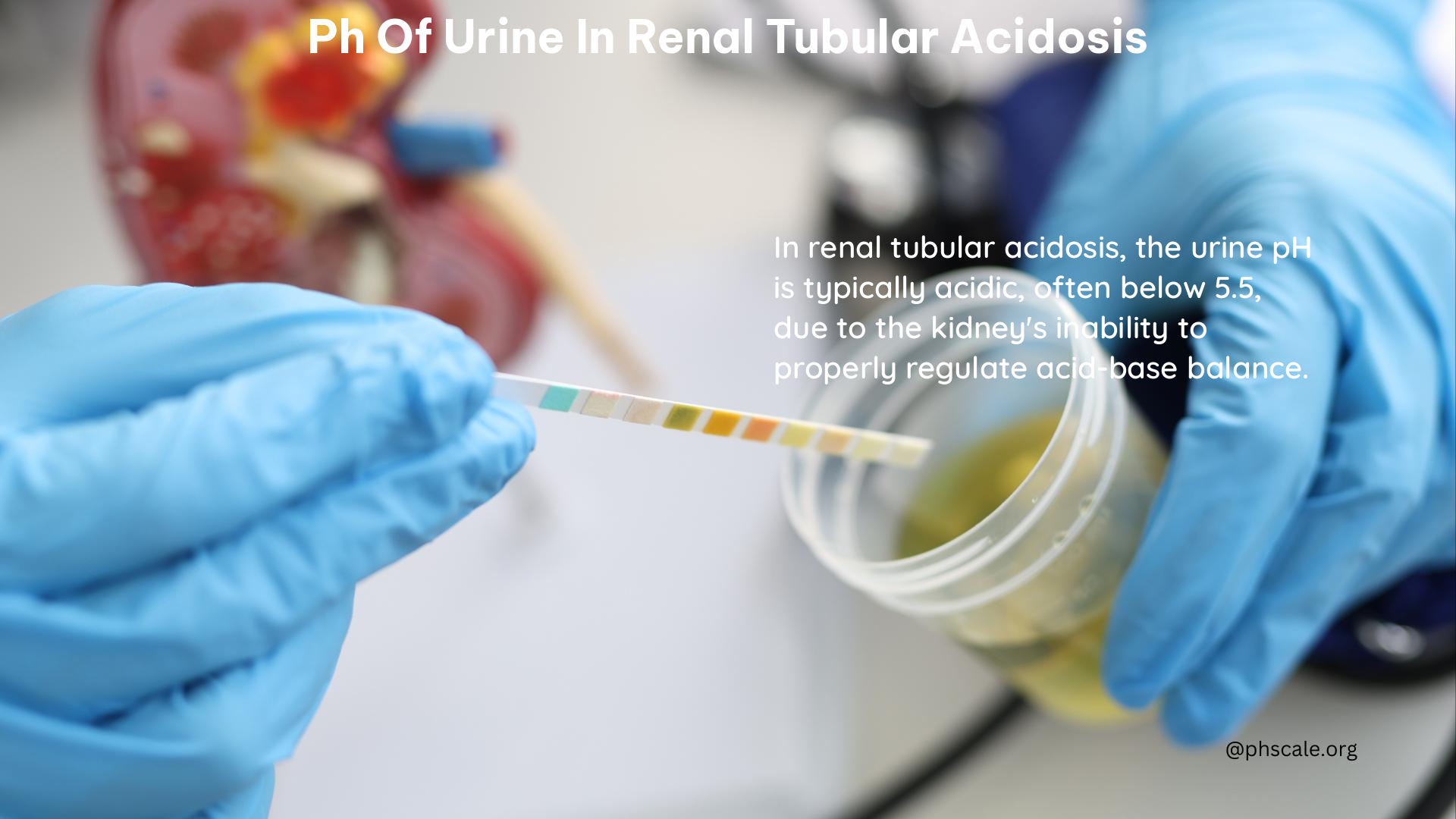Renal tubular acidosis (RTA) is a group of disorders characterized by impaired renal acid-base regulation, leading to chronic metabolic acidosis with a normal anion gap. The pH of urine in RTA is a crucial diagnostic indicator, varying depending on the type of RTA. In this comprehensive blog post, we will explore the significance of urine pH in the diagnosis and management of RTA.
Normal Urine pH
The normal urine pH range is 4.5-5.0, as virtually no bicarbonate is excreted. This is because the kidneys reabsorb almost all bicarbonate, with the remaining 10% reabsorbed in the distal tubule.
Types of RTA and Urine pH

Type 1 (Distal) RTA
- Urine pH > 5.5: This is a hallmark of distal RTA, indicating impaired secretion of hydrogen ions. The urine pH remains high even in the presence of systemic acidosis.
- Features: Nephrolithiasis, nephrocalcinosis, and hypokalemia are common due to chronic acidosis.
Type 2 (Proximal) RTA
- Urine pH variable: The pH can be above or below 5.3, depending on the patient’s acid load and whether they are receiving bicarbonate supplements. If they are receiving bicarbonate, the urine pH will be higher due to excess bicarbonate being excreted.
- Features: Proximal tubular dysfunction, glucosuria, phosphaturia, uricosuria, proteinuria, and aminoaciduria are common.
Type 4 (Hyperkalemic) RTA
- Urine pH < 5.3: This type is associated with hyperkalemia and aldosterone deficiency or resistance. The urine pH is typically low due to the inability to excrete potassium effectively.
- Features: Hyperkalemia, hypertension, and chronic kidney disease are common.
Diagnostic Significance of Urine pH
- Urine pH > 5.5: Strongly suggests RTA, particularly distal RTA.
- Urine pH < 5.3: May indicate proximal or hyperkalemic RTA.
Contaminants and Chemicals Affecting Urine pH
- Urea-splitting organisms: Can elevate urinary pH, mimicking RTA.
- Intravascular volume depletion: Can also elevate urinary pH, leading to false diagnosis.
Home Remedies and Balancing pH
- Dietary changes: Consuming a balanced diet with adequate bicarbonate precursors like fruits and vegetables can help maintain a healthy acid-base balance.
- Hydration: Adequate hydration is essential to help the kidneys function properly and maintain a healthy urine pH.
- Electrolyte supplements: In some cases, supplements like potassium or bicarbonate may be necessary to correct electrolyte imbalances, but these should only be taken under medical supervision.
Conclusion
In conclusion, the pH of urine is a crucial diagnostic tool in the evaluation of renal tubular acidosis. By understanding the different types of RTA and their associated urine pH patterns, healthcare professionals can accurately diagnose and manage this condition. Additionally, maintaining a healthy lifestyle through dietary changes and proper hydration can help support the kidneys in maintaining a balanced acid-base status.
References
- Vikas Parekh, M.D. (n.d.). Renal Tubular Acidosis – A quick guide. Retrieved from https://www.hospitalmedicine.org/globalassets/professional-development/clinical-quick-talks-pdfs/renal-tubular-acidosis-by-vikas-parekh.pdf
- UCSF Hospitalist Handbook. (n.d.). 02. Renal Tubular Acidosis. Retrieved from https://hospitalhandbook.ucsf.edu/02-renal-tubular-acidosis/
- Merck Manual Professional Edition. (n.d.). Renal Tubular Acidosis. Retrieved from https://www.merckmanuals.com/professional/genitourinary-disorders/renal-transport-abnormalities/renal-tubular-acidosis
- Yaxley, J., & Pirrone, C. (2017). Review of the Diagnostic Evaluation of Renal Tubular Acidosis. Retrieved from https://www.ncbi.nlm.nih.gov/pmc/articles/PMC5158160/.
